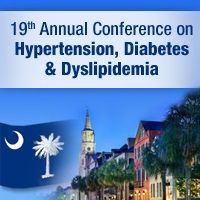Article
Primary Care: Gold at End of Rocky Road?
Author(s):
As the US population ages, better primary care is essential to keeping costs down. But so far, the new focus on that specialty has not resulted in adequate reimbursement, said Brent Egan, MD, speaking June 27 at a meeting of primary care physicians in Charleston, SC. He believes that will change.

It may seem impossible in this era of cost-cutting, but there may be new opportunity for primary care doctors in the changing healthcare landscape.
That will be particularly true when family practice physicians get specialized training in hypertension, Brent Egan, MD, told a a crowd of more than 200 primary care providers at the 19th Annual Conference on Hypertension, Diabetes and Dyslipidemia in Charleston, SC.
Egan is the medical director of the Care Coordination Institute. He is also a professor of medicine at the University of South Carolina School of Medicine Greenville.
Changes mandated by Medicare and the Affordable Care Act are moving health care away from fee-for-service medicine toward “value-based” care, in which doctors get financial incentives to meet quality targets, he noted. Because of that shift, primary care practitioners have an opportunity to affect population health, quality of care, and cost.
Ultimately, the rising importance of the specialty could mean more money.
For now, primary care doctors should be prepared for change.
For instance, they will be likely to be treating far more older patients.
The US population as a whole is aging as people live longer. Over the past 50 years, the percentage of people over 65 has grown from about 8% in 1950 to 12% in 2000. In the next 50 years experts expect people over age 65 to make up 20% of the populace. With this growth will come an increase in chronic diseases such as cardiovascular disease (CVD), diabetes, and hypertension, often seen together in the same person. At the same time, obesity is on the rise across all segments of the population, although certain ethnic groups are more adversely affected by lifestyle factors than whites.
All of these trends are contributing to the skyrocketing cost of healthcare--a cost that is not sustainable, Egan said..
The U.S. is spending more than 17% of GDP on healthcare, a higher percentage than any other developed nation. Direct and indirect costs are projected to keep going up to $540 billion and $100 billion, respectively.
As experts look for ways to cut these costs by keeping patients healthier, primary care takes center stage.
Cardiovascular diseases are some of the greatest contributors to this rise. In fact, they make up 6 of the top 7 most prevalent diagnoses among Medicare beneficiaries and are present in the most common dual diagnoses.
The confluence of these diseases is exactly where primary care physicians can make the most impact, Egan said.
On average, the number of people with diabetes over 65 make one visit to the hospital every year. In the STENO-2 study, Egan said, intensive diabetes management lead to a 50% reduction in high-cost health problems. T
he same study showed that lipid-lowering therapy accounted for more than 70% of cardiovascular risk reduction.
The Institute for Healthcare Improvement’s Triple Aim™ sets forth 3 principles for quality care: optimal care delivery across the healthcare continuum, a focus on improving the health of the population and reining in the costs of care, and providing “the right care at the right place at the right time.” This means focusing in on identified metrics for good care, like tobacco cessation screening and intervention, weight screening and follow-up, and preventive care and screening for hypertension and diabetes.
Of course,with an estimated 400 pages of guidelines, “it could take 18 hours, seven days a week, to manage some of the complex patients if you tried to meet every target,” Egan said. The trick is to focus in on the 2 or 3 targets that will have the most impact on health.
“Primary care doctors who can manage these complicated patients challenging patients are held to high standard by controlling metrics targets,” he said.
Egan sees potential growth opportunities for primary care providers who become Multi-Disciplinary ASH Clinical Hypertension Specialists. In addition to physicians, he emphasized the special knowledge advanced practice and doctorate nurses, and doctors of pharmacy can bring to the mix as ASH specialists, particularly in patient and family engagement in care, guiding quality initiatives, and management of complicated pharmacotherapy for multiple disorders.
But Columbia, SC family care practitioner Stephen Serbin, MD, argued that that primary care is not valued.
He said current financial incentives for reaching quality goals “don’t even begin to compensate for the costs” of meeting the new standards.
Egan allowed that this is true, but said that he expects the large companies that pay for the cost of employee benefits will push for more primary care to drive down costs.
“Yes, primary care will continue to be a challenge but recognition by business changes how they do things,” said Egan.
“So it’s rocky and bumpy,” said Egan, “but I think we have an opportunity to transform the healthcare system.”


